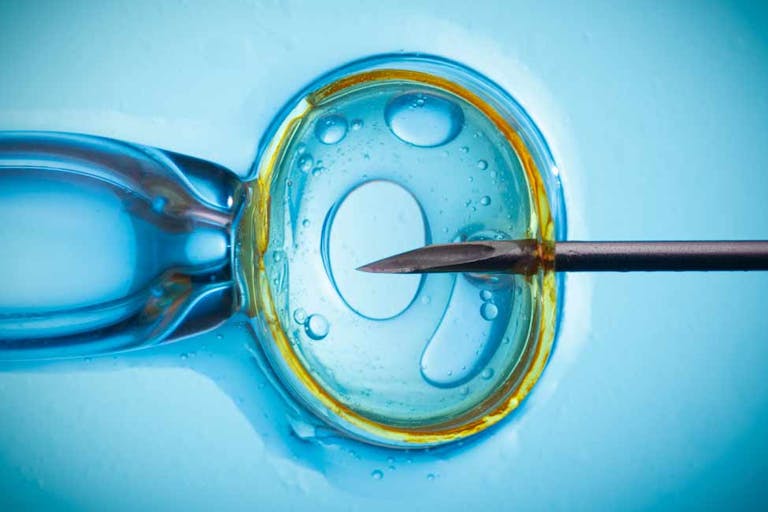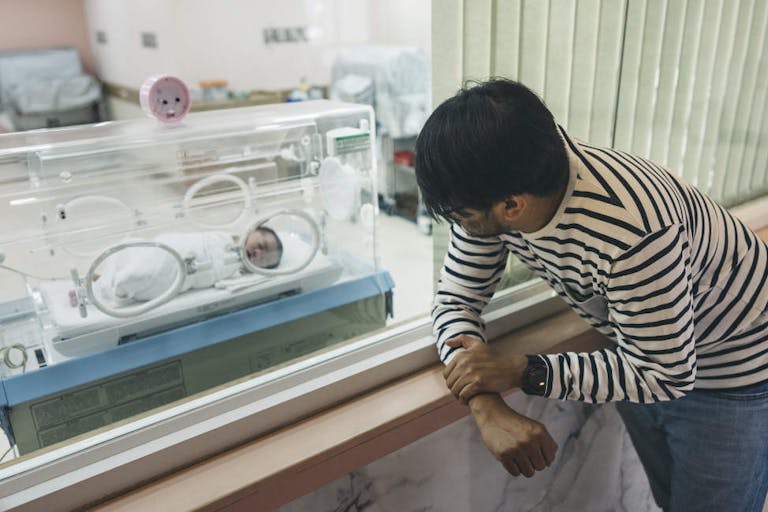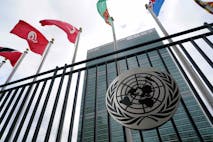
Abu Dhabi expands fertility industry to become 'IVF capital of the world'
Angeline Tan
·
Chinese government tries to increase birth rate with yearly payments to parents
Chinese state media CCTV has declared that the government will provide subsidies to parents in an amount equal to $500 (USD) per child under the age of three annually, amid attempts to reverse the country’s population decline.
China will offer $500 per child annually to the parents of children under age three in an attempt to increase the birth rate, which has been dropping.
While many parents say it is a step in the right direction, it may not be enough to incentivize them to have more children.
Demographers say more must be done to change the birth rate, which has never recovered since the end of China’s 30-year One-Child Policy.
Quoting a decision made by the ruling Chinese Communist Party (CCP) and the State Council, CCTV said that these nationwide subsidies, announced on July 28, would apply retroactively from January 1.
What this means is that the parents of children born before 2025 but still under age three can qualify for prorated payments for the number of eligible months. Payments will be tax-exempt and excluded from income assessments associated with social assistance programs. Over 20 million families are expected to benefit from the subsidies annually.
“This is a major nationwide policy aimed at improving public well-being,” CCTV proclaimed. “It provides direct cash subsidies to families across the country, helping to reduce the burden of raising children.”
As Stars Insider reported, China’s birth rate in 2024 “dropped by 50% compared to 2016, and the population declined by almost 1.5 million people in 2024. Moreover, China’s population is aging at a very fast rate, sparking concern about the strength of the Chinese pension system.”
It added, “The reasons behind the looming demographic crisis are multiple: young couples cite economic uncertainty and rising costs as the main reasons for not having children. A focus on their careers is also a factor.”
Likewise, The Straits Times reported, “The country’s population has declined for three consecutive years, with United Nations demography models predicting it could fall from 1.4 billion today to 800 million by 2100.”
In 2024, there were 9.54 million births in China — half the number than in 2016, the year the government terminated the country’s One-Child Policy, in place for over 30 years.
In response to the government’s announcement on subsidies, parents in Beijing expressed their support, but added that more is required to motivate them to have more children.
“For young couples who just got married and already have a baby, it might actually encourage them to consider having a second child,” Wang Xue, a mother to a nine-year-old son, told Agence France Presse (AFP).
“After all, the subsidy does help ease their burdens… and also offers some psychological comfort,” Wang admitted. However, Wang she acknowledged the new measures wouldn’t persuade her to have a second child. “Having one child is manageable, but if I had two, I might feel a bit of (financial) pressure,” she said.
Article continues below
Dear Reader,
In 2026, Live Action is heading straight where the battle is fiercest: college campuses.
We have a bold initiative to establish 100 Live Action campus chapters within the next year, and your partnership will make it a success!
Your support today will help train and equip young leaders, bring Live Action’s educational content into academic environments, host on-campus events and debates, and empower students to challenge the pro-abortion status quo with truth and compassion.
Invest in pro-life grassroots outreach and cultural formation with your DOUBLED year-end gift!
Zhang Wei, a 34-year-old father of a daughter and son, said the new subsidies are “a good start” because raising children is getting more expensive. “Compared to our generation, the costs have definitely increased exponentially,” he said.
Nonetheless, observers indicated that while the subsidies are a step in the right direction, they alone will not reverse China’s population decline, nor enhance the country’s slump in domestic expenditure.
“It is encouraging that the government finally moved to use fiscal subsidies to boost fertility,” said Zhiwei Zhang, president and chief economist at Pinpoint Asset Management, who added that the government appears to see the “serious challenge” of low fertility rates on the economy.
Zichun Huang, China economist at Capital Economics, hailed the policy as a “major milestone” in terms of direct handouts to households that could pave the way for more fiscal measures in the future. However, he feels these sums are unlikely to have a “near-term impact on the birth rate or consumption.”
Whether or not these measures will effectively combat China’s low birth rates remains to be seen, with their success contingent on various factors. As writer Daniel Dimays Sumarno penned:
The rollout of a national subsidy represents a strategic shift: from fragmented, local pilot programs to unified, centrally supported policy. Experts see this as a major milestone in China’s transition to more direct household support.
At the same time, demographers warn that without deeper structural investment in preschool access, workplace protections, affordable housing, and social attitudes, the long-term impact on fertility may remain limited.
In the coming months and years, the effectiveness of China’s $500-a-year subsidy will be measured not just in demographic data but by broader shifts in family formation behavior.
The success… ultimately depends on whether it can be layered into a comprehensive, fertility-friendly social framework or remain an isolated financial gesture.
Follow Live Action News on Facebook and Instagram for more pro-life news.
Live Action News is pro-life news and commentary from a pro-life perspective.
Contact editor@liveaction.org for questions, corrections, or if you are seeking permission to reprint any Live Action News content.
Guest Articles: To submit a guest article to Live Action News, email editor@liveaction.org with an attached Word document of 800-1000 words. Please also attach any photos relevant to your submission if applicable. If your submission is accepted for publication, you will be notified within three weeks. Guest articles are not compensated (see our Open License Agreement). Thank you for your interest in Live Action News!

Angeline Tan
·
International
Angeline Tan
·
International
Bridget Sielicki
·
Human Rights
Angeline Tan
·
Guest Column
Stefano Gennarini, J.D.
·
International
Bridget Sielicki
·
International
Angeline Tan
·
Human Rights
Angeline Tan
·
International
Angeline Tan
·
International
Angeline Tan
·
Activism
Angeline Tan
·